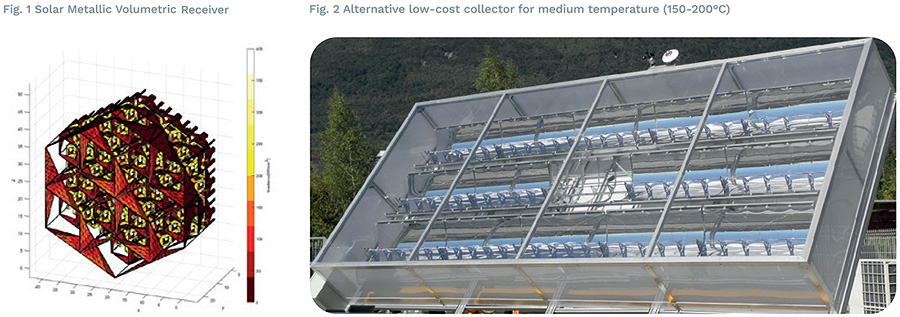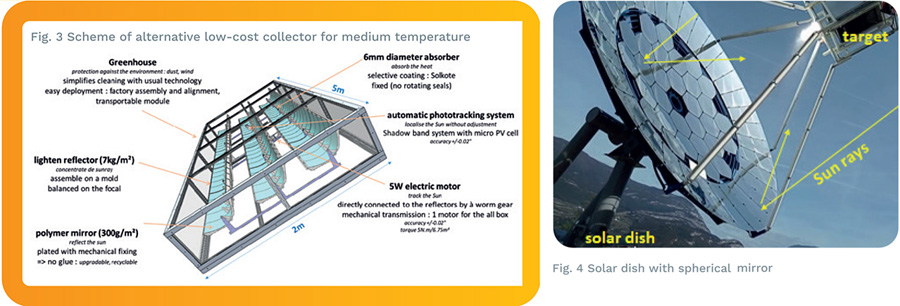Establishment of a European Common Innovation and Research Agenda
Solar thermal technologies face technological and competitiveness challenges hindering their wider contribution towards the European decarbonisation goals. These challenges become even more demanding when considering the use of such technologies in industrial applications.
INSHIP's (Integrating National Research Agendas on Solar Heat for Industrial Processes) primary objective is to connect research institutions and researchers across Europe, to provide a clear vision for R&D needs in Europe, and establish innovative pathways for growing and diversifying SHIP (Solar Heat for Industrial Processes) by gathering the participation of 28 European R&D institutions. Two core deliverables addressing these issues were completed within 2019. These were discussed at a workshop tailored for industry and policymakers that took place in Brussels in February 2019.
The first is a report on R&D needs that identified several areas of the state-of-the-art R&D and proposed steps towards future improvements. Topics identified in the project preparation stage were proven to be still relevant, such as the integration of higher TRL systems to industrial processes, and the need for a new breed of low TRL solutions with an emphasis on cost reductions and system integration. Utilising data collected from the National Concept Notes (prepared by project partners and important national stakeholders), as well as feedback from the industry and policy makers, the report highlighted the need for proper financing instruments and the convergence to common technical standards. These results were corroborated by the realisation that SHIP needs to promote its value proposition more (and move away from pure cost calculations), and also emphasise awareness for the technologies, both at the industrial and the policy maker sides. SHIP research should leverage EU funding, since the bulk of funds so far have been coming from national sources. For this, the technology needs to underline its credentials as a viable tool towards decarbonisation of the industry, one of the sectors that will be hardest to move towards zero- carbon-emitting fuels.
The innovation strategies document examined how INSHIP’s 10 European research countries position themselves in terms of their policy support, competitive advantage and practice-based innovation gauged across a multitude of SHIP-related variables. The results of the report show that acknowledgement and support of SHIP is generally still low (but not universally across all countries examined), and the type of innovation support provided is disparate, with some strong regional schemes but none nationally, or vice-versa. Again, it became apparent that SHIP is disadvantaged compared to other renewables (and CSP in particular) due to its low visibility among the general public, and
the inadequately communicated
potential.
The project has embarked on an ambitious programme of disseminating these findings, and other important outcomes as the project’s KERs (Key Exploitable Results) to national audiences, comprising the local industry, academia and policy makers through national workshops held between 2019 and 2020 in all involved countries. Three workshops have already taken place in Greece, Spain and France. More will follow within 2020.
INSHIP integrates a high number of research activities (44) across low, medium and high temperatures as well as in hybrid systems. Some of them progressed to a high level of maturity, with a potential to be commercially deployed, with a lifetime that goes well beyond the end of INSHIP. Some of them are listed below:
- Solar volumetric receivers with an innovative hierarchical structure (Fig 1). To overcome the high cost of ceramic materials of high temperature solar volumetric receivers, a metal using selective laser melting (SLM) was tested in the INSHIP concept providing an efficient and tailored geometry. The new receiver exhibits a hierarchically layered volumetric structure and provides heat for high-temperature processes (>600°C) with an efficiency reaching more than 60%.
- Another outcome of the project can also be found in the setup of a new quasi-stationary CPC-type solar thermal collector. This new cost-effective linear focussing collector for industrial applications of up to 200ºC can be installed on all surfaces including vertical and tilted ones. Overall, this product can have a higher performance-to-cost ratio compared to standard technologies – due to its novel optical design – and lower maintenance than tracking solutions.
- Encapsulated parabolic trough solar collectors working at 200°C were also developed (Fig 2 & 3). They can be installed in buildings facades, encapsulated in a small greenhouse protecting the system from the wind. With an optimized weight, the plug and play mechanism allows swift installation, and the front glass window enables easier cleaning than conventional systems. This solution eases maintenance in buildings where space is scarce.
- A solar dish with spherical mirror has also been studied in the framework of INSHIP (Fig 4 ). The mirror is cheaper than a parabolic mirror, while the structure of the solar dish makes the installation of the system on non-flat lands possible. Its range of application is adequate for processes with a working temperature between 600 and 1350°C.


The project is presently at the end of its third year, with a total project duration of four years. Information on the project, the consortium and related activities and resources is available at the INSHIP website (www.inship.eu).
Contact details:
INSHIP Coordinator
Dr. Peter Nitz
Fraunhofer ISE
Email: contact@inship.eu
INSHIP ECRIA is a Research and Innovation Action supported by the European Commission under Horizon 2020 (LCE-33-2016, GA Nr. 731287).